What is oil canning kayak, and how do you fix it? Oil canning refers to indentions or depressions on the hull of the kayak. It causes the hull to curve inwards instead of forming an outward curvature.
Kayak oil canning reduces the performance and becomes unsightly on your boat. You will use more energy to steer the kayak because the dents alter the design shape and may induce drag. Fortunately, you can fix or prevent kayak oil canning.
Read on to learn more about oil canning in a kayak, including how to prevent and fix the problem!
Table of Contents
What Is Oil Canning Kayak?
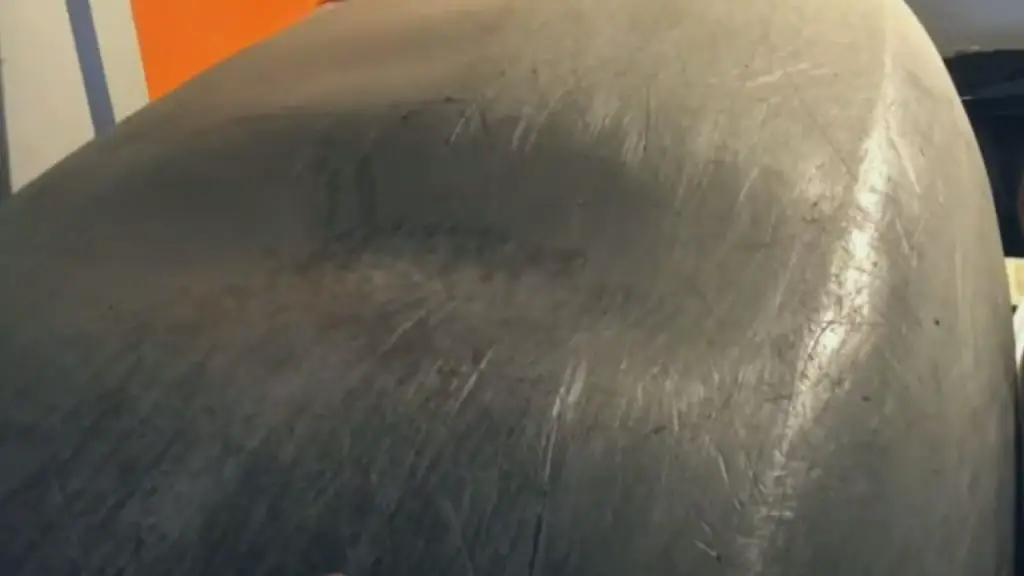
Oil canning in a kayak refers to the indentions on the boat’s hull. These commonly result from stowing the kayak on the bottom of the hull or strapping down too tightly. For plastic kayaks, oil canning refers to the waviness of the hull’s plastic.
Oil canning may also arise from wear and tear caused by dragging your kayak on the ground. Instead of a smooth outward curvature, the hull of a plastic kayak appears wavy towards the interior.
As the name suggests, the indentions sometimes pop out under pressure, just like an oil can. This phenomenon occurs in both new and old plastic kayaks and canoes.
What Does Oil Canning On a Kayak Look Like?
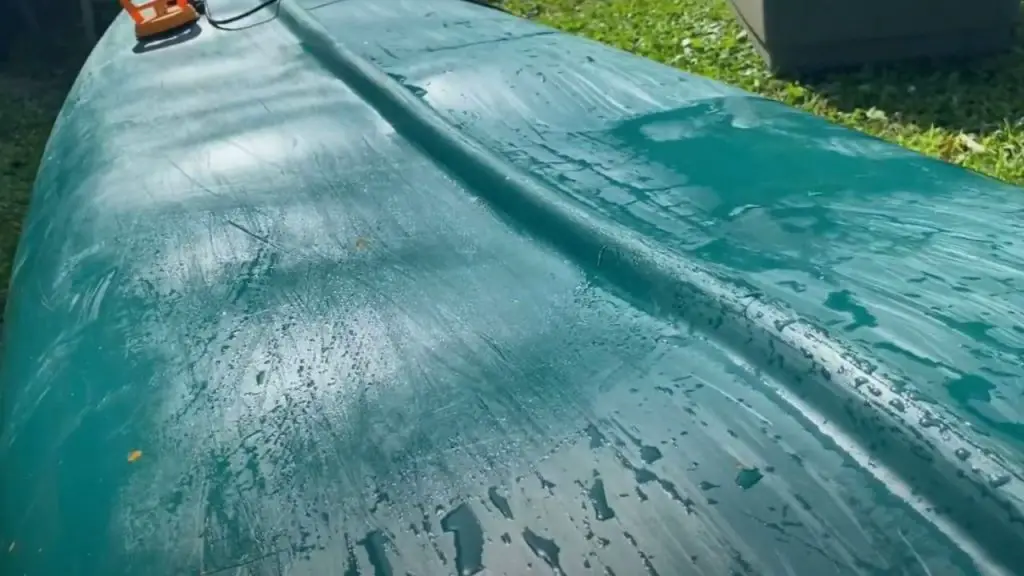
Oil canning manifests as depression or dent at the bottom of the hull. It causes the affected section to curve inwards instead of outward curvature.
The affected area is visibly under stress and pressure. That is usually where the kayak rests on the roof rack.
Why Is My Kayak Canned Oil?
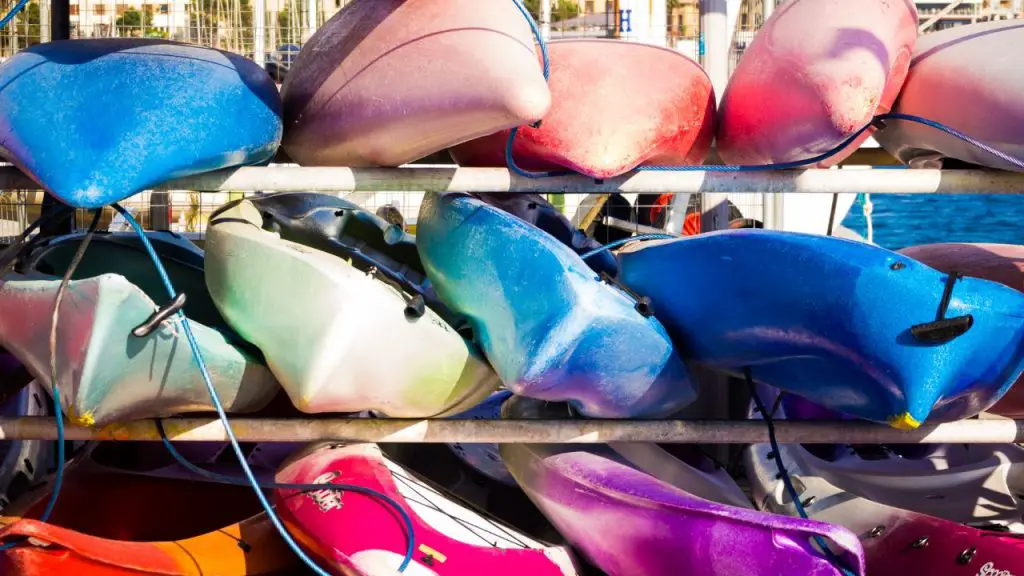
Many factors can cause kayak oil canning, but improper storage and transportation are the most common. Some people fasten their boats on the roof rack too tightly using cam straps. The pressure created causes dents where the kayak rests on the roof rack.
Another common mistake by most paddlers is storing the kayak on its hull. Over time, the kayak’s weight puts more pressure on the hull. That eventually causes dents.
Dragging your kayak on the ground often causes oil canning on the hull. The friction between the hull and the ground causes wear and tear. Unfortunately, it is uneven, manifesting as dents on the boat’s hull. Use an appropriate method while carrying your kayak, such as keel guards.
MEGAWARE KEELGUARD Original DIY Keel Guard
What Is The Issue With Oil Canning Kayak?
One thing for sure is a reduction in the performance of your kayak if it has oil canings. But how does that happen? An oil canning reduces the ability of your kayak to track through water by creating drag. That only means you put more effort into paddling to compensate for the drag.
Oil canning can potentially reduce the speed of your kayak, but that depends on the area where it occurs.
Apart from the performance deterioration, dents on the hull or oil canning are eyesores. They become unsightly and reduce the cosmetic value of your boat. You will hate them as much as you hate dents on your car!
Oil canning kayak may also indicate that the material is going thin. This can be particularly detrimental for a kayak’s hull since fractures are more likely to occur and cause damage when using a long time.
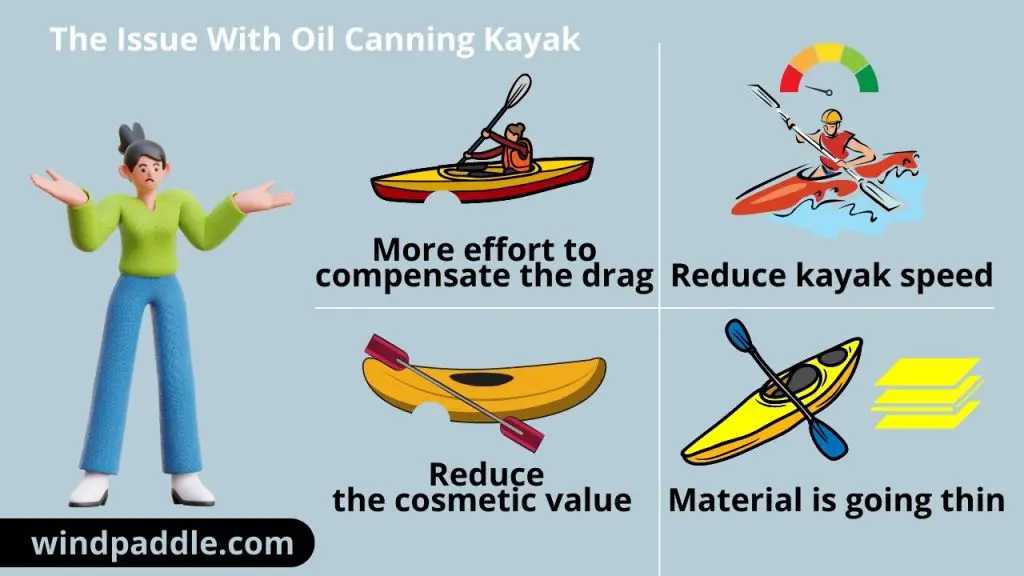
How to Fix an Oil Canning Kayak?
Oil canning reduces your kayak’s performance and aesthetic value. Fortunately, ways of fixing it exists. You can remove the dents on the hull using your hands, sun, hairdryer, or heat gun, or by pouring hot water inside the hull. Let’s walk you through each of these methods.
Use the Sun
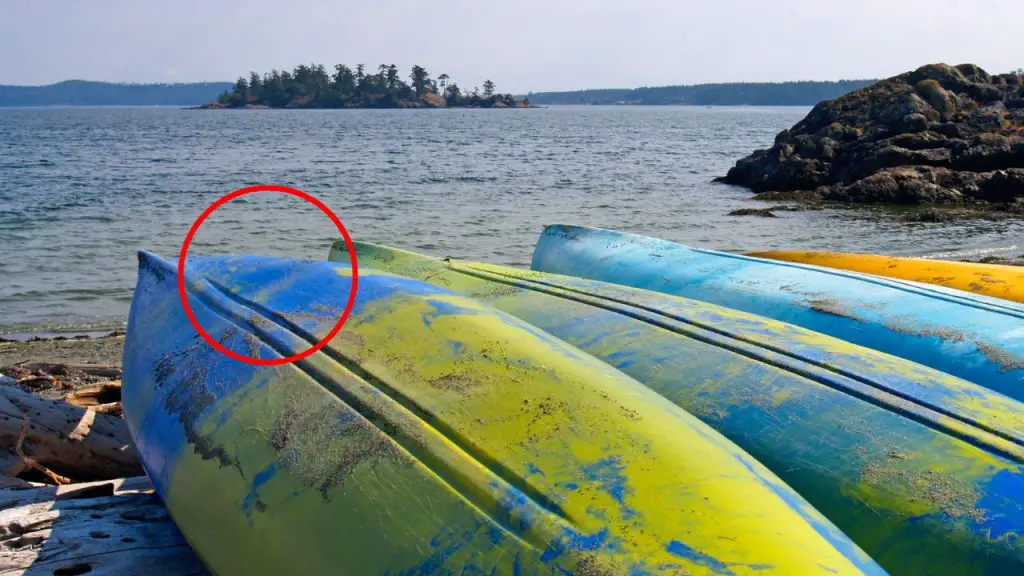
The heat from the sun is sometimes enough to pop out oil canings on a kayak, but how do you do it?
To fix the problem, put your kayak in the sun with its hull bottom facing up. Leave the kayak in the sun for about two hours or until it absorbs enough heat to soften the hull. The oil canning or dent should repair itself under heat. The hull should get back to its original shape.
Using Your Hands
Take your kayak outside or in an open space to expose it to heat from the sun. Leave it there for a few minutes to absorb the heat. If it is a small dent, it will pop out by itself. But if it doesn’t, it is time to use your hands.
Use your hands to push the affected area from the inside. The combined effort of your hand and the sun should force the dent back up. Your hull will regain its original shape.
Use a Hairdryer or Heat Gun
Did you know a heat gun or a hairdryer can help you solve the oil canning problem? This is the best alternative if you live in a cold region with less heat from the sun.
Use a heat gun or hair dryer to carefully warm up the area with the dent on the hull. It is better to do it from the inside of the hull to allow it to regain its modeled shape.
However, be cautious to only heat the plastic to make it soft by applying just enough heat. Excess will melt it, creating a hole in the hull is a much worse problem than oil canning.
Wagner Spraytech 0503008 HT1000 Heat Gun
Pour Hot Water Inside The Hull
If the above methods are ineffective or are not feasible in your case, use hot water to solve the oil canning problem. Pour hot water inside the hull to cover the indention. The heat from hot water should force the oil canning to pop out.
This method may be very effective because water also exerts weight on the dent, forcing it back outwards.
How to Prevent Kayak Oil Canning
Fixing oil canning can be time-consuming. So, it is better to prevent it from occurring in the first place. However, it is not possible to stop oil canning in all cases. But do not let the preventable factors ruin your kayak or canoe.
Preventing kayak oil canning starts with understanding the causes. As mentioned, the dents on the hull result from dragging your kayak on the ground and making the cam strap too tight when transporting the kayak. Improper storage is also a possible cause.
Ensure you never drag your kayak on the ground to avoid oil canning. Secondly, use racks and suspension systems when storing your kayak. And lastly, don’t fasten cam straps too tight on the roof rack during transportation. Just make it enough to hold the boat in place.
RAD Sportz Kayak Hoist, Overhead Pulley System with 125 lb
FAQs
Can you fix oil canning?
Yes. Kayak oil canning can sometimes disappear on its own over time. But if it doesn’t, you can use the sun, a hair dryer or hot gun, hot water, or your hands to pop out the dent.
Is oil canning a defect?
No. All kayaks are perfectly designed without flaws on the hull. Oil canning is purely an aesthetic issue caused by improper handling during transportation and storage. Dragging the boat on the ground is the most likely cause.
Is oil canning normal?
No. Oil canning is a dent on your kayak. It is a problem caused by storing the boat on its hull, dragging it on the ground, and over-tightening it on the roof rack during transportation.
Is oil canning bad on a metal roof?
No. Oil canning does not cause any issues to a metal roof. It is just a dent on the hull that looks wavy on metal panels.
Can oil canning be prevented?
Yes. You can prevent kayak oil canning by storing your boat on suspension systems instead of on its hull. Also, avoid dragging the boat on the ground and over-fastening it using cam straps on the roof rack.
How do you fix oil canning in aluminum?
Fixing an oil canning in aluminum is not as direct as plastic. The simple heating method does not suffice! You may need to take your aluminum kayak to specialists in body repairs to help you pop out the dents.
Conclusion
Kayak oil canning reduces its performance by causing drag in the water. It also makes the boat look unattractive. Fortunately, you can fix this problem or prevent it altogether.If you have a plastic kayak, you can pop the dent out through heat treatment or using your hands.
And to prevent it, avoid dragging the kayak on the ground and over-fastening it on the roof rack. Also, do not store the boat on its hull.
Thank you for reading this article at the Windpaddle. We appreciate your time and believe you found this piece informational. Kindly help us reach more people by sharing this post with your fellow paddlers. You may also explore the website for related content.



